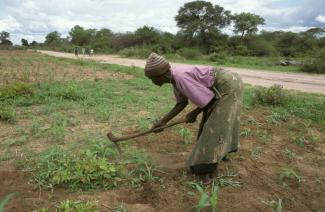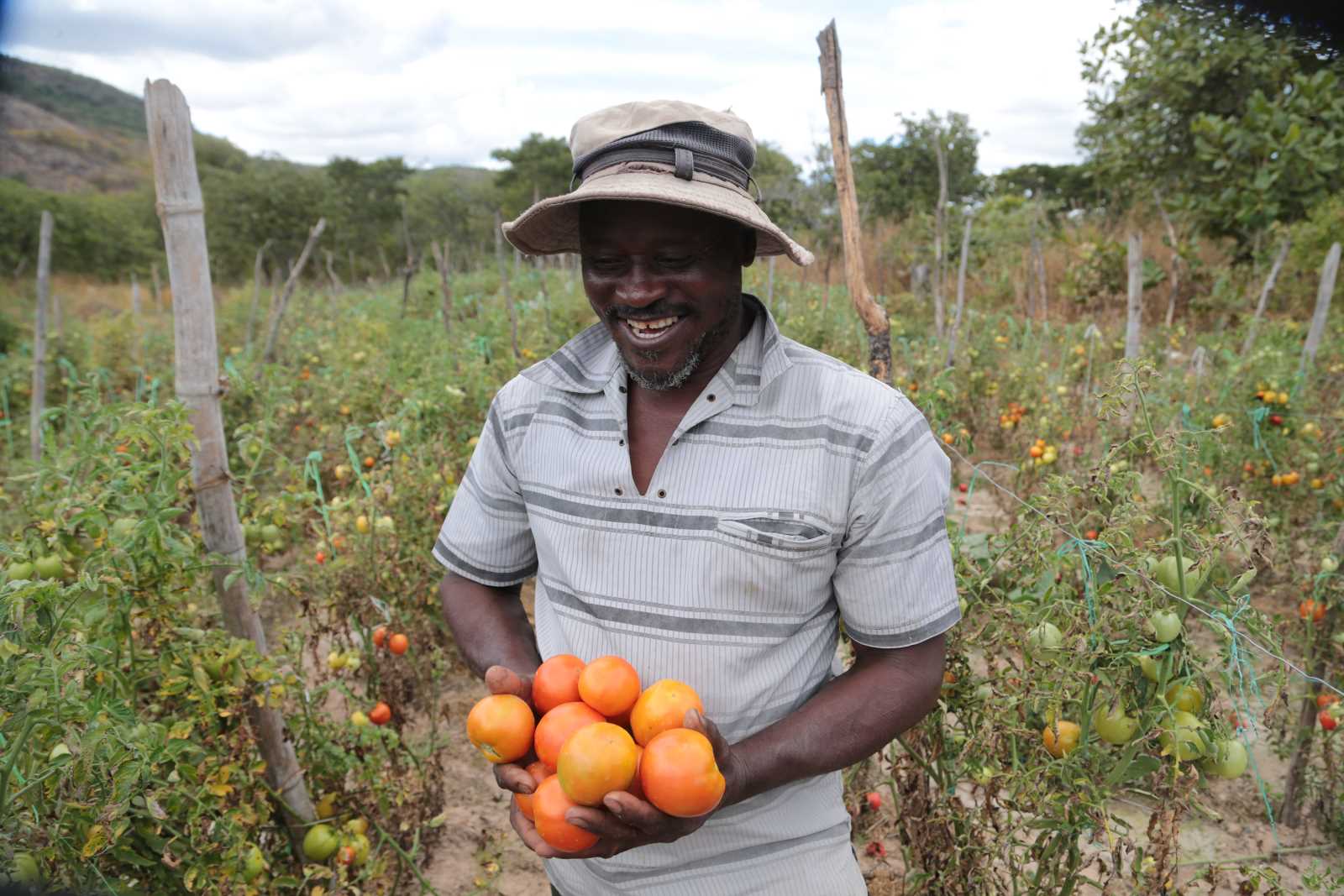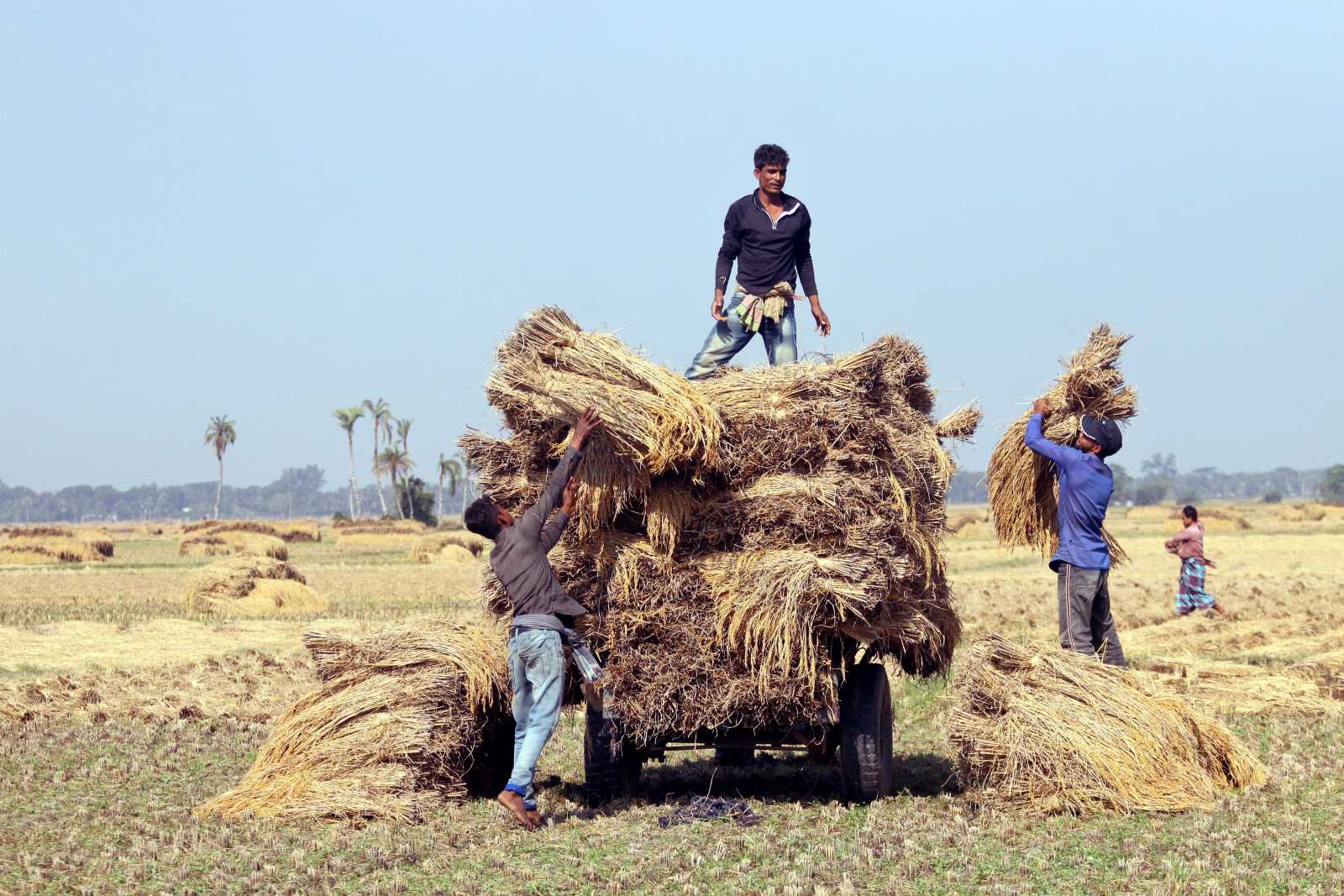Agricultural diversification
Dethroning King Maize

In Zambia, maize is by far the most important dietary staple and a main beneficiary of agricultural subsidies. But in coming years, maize may have to make room for competing crops.
Inonge Wina, Zambia’s vice-president, recently startled people by calling on them to vary their diets, eating less maize and more millet, sorghum, cassava, rice and sweet potatoes. “The switch to more nutritious foods is one of the low-cost and effective ways of addressing stunting and malnutrition in the country,” Wina said.
Her proposal runs counter to Zambia’s culture. Zambians typically eat maize-based meals two or three times per day. Many do not consider themselves to have eaten at all if they have not eaten maize or something made of maize. Particularly popular is a stiff maize-based porridge known as nshima. Maize is also used to brew beer.
The vice president’s comments come at a time when maize farmers face a host of other problems. Many of them see their costs going up, while the government-owned Food Reserve Agency (FRA), which buys their produce, continues to pay them a constant 110 kwacha (the equivalent of € 4.6) per 50 kilogramme bag of white maize. The Zambia National Farmers’ Union (ZNFU) says the price should be raised to 130 kwacha, in view of farmers’ rising costs for fertilisers, seeds, chemicals, transport, electricity and labour.
At the same time, a subsidy programme on which many maize farmers depend is failing to deliver necessary inputs like fertiliser or pesticides on time. “We are nearing the planting season and land preparation is underway, but we still do not have the inputs we expected to get in July,” says Veronica Tembo, a small-scale farmer from Lusaka’s Chongwe district. “Farmers should only have to worry about when the rains will come, not about undelivered inputs.”
The Zambia’s Farmers Input Support Programme (FISP) was launched by the government in 2002 to provide subsidised seeds and fertiliser to maize farmers and to involve private traders in the supply of inputs. In recent years the programme has been plagued by mismanagement and corruption. At the same time, it has fostered dependency among farmers.
“Most small-scale farmers on FISP have been beneficiaries for over five years, even though they were meant to ‘graduate’ to self-sufficiency after two years, says Robert Tembo, a farmer in Chipata, eastern Zambia. He adds that some politicians use FISP to gain favour with voters and stay in power.
On the other hand, the ZNFU wants more farmers to benefit from FISP. “Of the 3.3 million metric tonnes of maize produced, 1.3 million are grown by small-scale farmers who do not benefit from FISP,” says ZNFU spokesman Calvin Kaleyi. “With the FRA prices at 110 kwacha, maize farmers will be bankrupted and production will decline next year.”
Producers of other cereals, vegetables and fruits, meanwhile, are vying for a piece of the FISP action. “We too need subsidised inputs, just as maize farmers do,” says Monde Sitwala, a rice farmer from Mongu district. “The government should recognise rice as a profitable smallholder cash crop and a major contributor to national food security.”
When this essay was finalised in mid-October, however, Zambia seemed to be close to a severe financial crisis because of high foreign indebtedness. How that crisis might play out, and how it would affect government capacities was anybody’s guess.
Improving diets
The debate over priority treatment for maize takes place against a backdrop of widespread malnutrition in Zambia. According to the International Institute for Environment and Development (IIED), an independent think tank based in London, the country’s heavy emphasis on eating maize is the reason why Zambia has one of the world’s highest rates of undernourishment (see Sabine Balk in D+C/E+Z e-Paper 2020/11). More than a third of children under five have stunted growth, and a quarter of adults are obese, the report says.
Similarly, the UN Development Programme’s 2019 Human Development Index shows that 48 % of Zambians cannot meet their minimum calorie requirements. The Index ranks Zambia 143rd out of 189 countries in terms of key indicators of human development.
According to IIED author William Chilufya, the large amount of land devoted to maize contributes to poverty, both because maize fetches low prices and because it does not lend itself to many value-added agro-processing, trading and input supply activities. That limits the cereal’s economic multiplier effects.
In part, Zambia’s over-reliance on maize leads to poverty because it produces maize inefficiently, using outdated farming techniques. Most small-scale farmers use traditional tools and depend on rain, making them vulnerable to natural disasters and increasingly erratic weather due to the climate crisis. Rising average temperatures have caused severe food shortages for 1.7 million Zambians, or 18 % of the population, the IIED reckons.
The link between poverty and over-reliance on maize can also be traced to the health effects of an unvaried diet. While Zambia is focused on producing and consuming maize, other cash crops – including soybeans, rice, cassava, beans plus vegetables and fruits – receive too little investment and too little attention from consumers. Cotton and tobacco are important cash crops too, though they have no impact on people’s nutrition.
The government is trying to allocate more resources to building infrastructure and conducting research and development for a range of other crops. Of particular current policy interest is cassava, a starchy tuberous root vegetable and major source of carbohydrates.
“Cassava is a game changer in light of climate change,” says Veronica Chimuku, a cassava producer from the Kaoma district of western Zambia. “It is more drought-resistant than other crops that depend on rain-fed agriculture.”
Reordering priorities
Convincing Zambians to substitute other foods for maize may be more difficult than changing national investment priorities, however. With over 60 % of Zambians living below the poverty line, varying diets may simply be too expensive. The Jesuit Centre for Theological Reflection, an advocacy group for the poor, estimates that a varied basket of foods meeting nutrition requirements would cost 7,000 kwacha (€ 296) per month – putting it out of the reach of most households.
For the government, this means that a public information campaign – plus perhaps more subsidies for other crops, aimed at reducing their market prices – is in order. The government has made a start in this direction, correctly targeting agriculture as a priority sector for investment. But a sharper focus on which specific commodities to single out for support may also be needed.
Two-thirds of Zambia’s population live in rural areas and rely on agriculture for income, making investment in agriculture particularly necessary. Agriculture accounts for only 20 % of Zambia’s GDP but could be a major source of growth, given the country’s abundant fertile land and good rainfall.
Throughout sub-Saharan Africa, growth in agriculture reduces poverty up to 11 times faster than growth in other sectors, according to the International Fund for Agricultural Development, a specialised UN agency.
Diversifying crops and investing in agricultural infrastructure may not be a miracle cure for Zambia’s ailing economy and malnourished population. But they offer a promising way out of some of the country’s most pressing current problems.
Further reading
Chilufya, W., 2019: Beyond maize; exploring agricultural diversification in Zambia. London, IIED.
https://www.iied.org/beyond-maize-exploring-agricultural-diversification-zambia
Derrick Silimina is a freelance journalist based in Lusaka. He focuses on Zambian agriculture and sustainability issues.
derricksilimina@gmail.com















